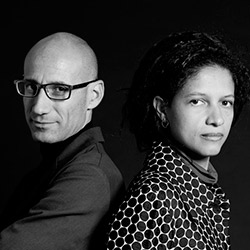The topography found in the meander allowed architects to formalize the project incorporating the fluvial dynamics to the public space.
Description of the project by aldayjover Architecture and Landscape.
Aranzadi’s Meander, as so many other meanders, is the result of the double action of water and progressive human occupation with the agriculture throughout centuries. During thousands of years, the dynamics of River Arga have generated rich soils, vegetation and natural ecosystems, and man has taken advantage of them. The intensification of farming sometimes has produced symbiotic relationships, and other times conflictive ones. The variability of water volumes and the river paths are the source of fertility and ecological complexity of the river side spaces.
However, this variability, the uncontrollable nature of the fluvial dynamics and, in particular, of the floods, has usually been perceived as a threat. Human pressure on the territory, our need to occupy space and produce, to secure assets and lives, has exacerbated the requirement of stability and security. Dams and dikes have modified the morphology of most of the rivers. The word is “defense”, but against what? Are not the rivers and the presence of water essential for almost every human settlements?
This conflictual relationship between dependence and defense occurs for millennia in urban and agricultural environments. The contradiction between fertility and security, deposit and defense, harvest seasonality and flood unpredictability, generates multiple physical situations in fluvial environments.
In Aranzadi’s Meander, it’s possible to found the centennial “soft” intelligence of filtering floods and their dragged solids ( stones, trunks, wastes…) through plots dividing hedges, but also the “hard” radical defense with dykes against fluvial dynamics and the fertility of the silts deposits that river brings. Over centuries, even topography has changed and the river beach now is a high point of the meander, encasing a kind of channel. A channel made deeper and deeper by the energy of the river, in a progressive encasing.
Over centuries, even the topography has changed and the river beach has seen its highestcomeback to end up being a high point in the meander, encasing a runway become channel. A channel theenergy of the river deepens more and more progressive interlocking.
In these circumstances, Aranzadi’s Meander Park preserves most of the secular orchard that has humanized it, the physical and cultural heritage of Pamplona, and simultaneously generates spaces for the river and its dynamics, and for the citizen who now can access this city’s hidden heritage.
The topography found in the meander allowed us to guess an inland river that the project formalized and gave coherence, incorporating the fluvial dynamics to the public space. This strip parallel to the river, under the level of the river bank, is connected upstream and downstream of the river, creating a second temporary channel. Thus, this space, the Flood Forest, incorporates the natural dynamics of the River Arga in an urban public space. After the projects for the Gallego Riverside Recovery in Zuera, and the Water Park in Zaragoza, Aranzadi’s Meander Park goes one fundamental step further in the process of converting flood in part of the urban public space. The territory of the river is a shared territory, 350 days for citizens (therefore assumed assumed as one of the spaces of the city), 15 days for the river (enough to generate a unique ecology), and 365 days a year for the vegetation and runoff waters.
A privileged park.
This is an unusual place, a beautiful meandering between Pamplona and old neighborhoods of Rochapea and Chantrea with a landscape of gardens and vegetation of beautiful specimens yet settled, in a suitable climate for the development of a splendid park to the public.
Rebalance the position of strength with which man has been linked with the environment looking for a balance and a covenant is the ultimate goal of this proposal.
Environmental public park.
This is a unique and sensitive site in terms of different requirements that must be addressed. We propose to restore the dynamism of a natural meander, in terms of its environmental role with the river corridor what means working the vegetation, wildlife and hydropower. We seek a balance between the needs of high-quality space for citizenship, river dynamics, crop exploitation of local varieties recovered by organic farming and environmental role of the park in the hallway of Arga.
A river landscape.
Based on the pre-existing and doing a thorough analysis of the micro-topography of Aranzadi meander, we deduce and understand its hydraulic logic in flooding, suggesting that the park work with the functionality of the Arga River when the water flow increases, decreasing slightly the frequency of flooding of the gardens
while simultaneously creating a river landscape within the park, a natural subject to the seasonal dynamics of flood water. Water is landscape in the park.
A new landscape from its history. We start with the certainty that the landscape exists, lies in its behavior and its history. We propose a strategy for enhancement of the potential and the traces of the place. The territory has in its settings and behavior a past which is the basis for its future.















































